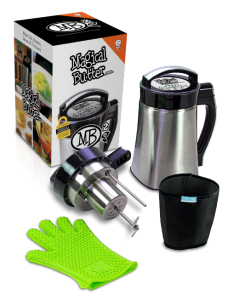Sprouting is a simple yet powerful way toinstantly boost the nutrition in many of your favorite foods. Whether you are already an avid home cook looking for a new culinary adventure or someone looking for a healthier eating approach, sprouting offers a wonderful opportunity to make healthy meals at home with ease. Learn how amazing sprouts can be both nutritious and delicious as you discover how easy it is to grow these vibrant superfoods in your own kitchen. From microgreens that look almost too good to eat to crunchy seasoned nut mixes that are sure to please any snack craving. Come along on this journey of tasty discovery and explore all the magic that sprouting has in store!
Introducing Sprouts – Nature’s Powerhouse of Nutrients
Sprouts are a small yet mighty addition to any mealtime routine. These tiny little superfoods are packed with nutrients and health benefits that can help fuel your body and mind. Sprouts are typically forages that have just begun to grow, meaning they are chock-full of vitamins and minerals needed for growth. These powerhouse vegetables are great sources of fiber, protein, and antioxidants and can add a flavorful element to your salads, sandwiches, and wraps. Not only are sprouts full of beneficial nutrients, but they are also easy to grow and often affordable.
What Is Sprouting and the Benefits of Eating Sprouts
Sprouting is the natural process by which seeds or spores germinate and put out shoots. This transformation happens under ideal conditions of warmth, moisture, and relative darkness. Sprouting can be performed at home with a wide array of seeds, including beans, nuts, grains, and seeds of vegetables or herbs.
The benefits of eating sprouts are numerous. They provide a concentrated package of valuable nutrients such as vitamins, minerals, antioxidants, and enzymes that aid digestion. Sprouting increases the bioavailability of these nutrients, making them easier for the body to absorb. Sprouts also have a lower calorie count and higher fiber content compared to fully-grown vegetables, making them a smart choice for those who are mindful of their diet. Their crunchy texture and fresh taste add a unique element to various dishes, enhancing both the flavor and nutritional profile. Besides being healthful, sprouts are sustainable and eco-friendly, as they require minimal resources to grow. They can be grown year-round, regardless of the season, right in the comfort of your own kitchen.
The Different Types of Seeds to Sprout and How To Prepare Them
There are a myriad of sprouting seeds, each bursting with their unique nutrient profile and taste.
- Alfalfa Seeds: These are one of the most common types of seeds sprouted. They are rich in vitamins A, C, E, K4, and minerals like calcium, potassium, iron, and magnesium. To sprout alfalfa seeds, soak them in a jar with water for about 3 to 4 hours, then rinse and drain. Repeat the rinsing and draining process 2-3 times a day for about 5 days until the sprouts are ready.
- Broccoli Seeds: Known for their high antioxidant content, broccoli sprouts have a robust flavor and provide a substantial crunch. Start by soaking the seeds overnight, then rinsing and draining them 2-3 times a day until sprouts appear, usually within 3 to 4 days.
- Mung Beans: A staple in Asian cuisine, mung bean sprouts are rich in protein and dietary fiber. They require a soaking period of 12 hours followed by rinsing and draining 2-3 times a day for 2 to 5 days.
- Radish Seeds: For those who enjoy a spicy kick, radish sprouts are an excellent choice. They require a similar preparation method to alfalfa seeds.
- Sunflower Seeds: Full of healthy fats, fiber, and essential vitamins, these sprouts are a nutritious and delicious addition to salads and sandwiches. Soak the seeds for 12 hours, rinse and drain them, and then allow them to sprout in a dark, well-ventilated area for a week.
Step-by-Step Guide to Growing Your Own Sprouts at Home
With a simple sprout grow kit, you can enjoy the taste and nutrition of these tiny powerhouses any time of day. Here is a step-by-step guide to growing your own sprouts at home:
- Soak: Begin by soaking the seeds overnight in a jar filled with water.
- Rinse & Drain: The next day, rinse the seeds and drain them. Repeat this process 2-3 times a day for the duration of the sprouting period.
- Sprout: Once the seeds have sprouted, place them in a dark and well-ventilated area for a few days to allow them to grow further.
- Harvest: After a week or so, your sprouts will be ready to harvest! Rinse them and remove any hulls or seed coats that may still be attached.
- Store: Store your sprouts in an air-tight container in the fridge and enjoy them within a week for optimum freshness.
Creative Ways to Incorporate Sprouts into Your Everyday Meals
Sprouts are an excellent way to add a burst of flavor and nutrition to your everyday meals. There are countless creative approaches you can take to incorporate these little powerhouses into your diet. For example, try tossing a handful of sprouts into your morning smoothie or using them as a crunchy topping for your favorite salad. You can also add them as a nutritious garnish on top of your favorite soup or use them as a crispy, fresh filler in your sandwich or wrap. Sprouts are an incredibly versatile ingredient that can be used in a wide variety of dishes.
Healthy Recipes Featuring Sprouted Seeds
Sprouted seeds are not only packed with essential vitamins and minerals, but they also add a satisfying crunch to any dish. From salads to smoothie bowls, there are countless ways to incorporate sprouted seeds into your healthy meals. Try tossing a handful of sunflower sprouts into your favorite pasta dish or sprinkle some sprouted pumpkin seeds on top of your morning yogurt and berry bowl.
Wrapping Up – Tips for Storing and Enjoying Your Homegrown Sprouts
Once you’ve grown your sprouts, it is important to store them properly so that they remain fresh, crunchy, and packed with nutrients. One of the best ways to store your sprouts is by placing them in an airtight container and storing them in the refrigerator. This will help to preserve their freshness and flavor for a longer period. To enjoy your homegrown sprouts, you can add them to salads, sandwiches, or even smoothies.
Sprouts are a great superfood to add to your daily diet and lifestyle. Not only are they packed full of nutrition and vitality, but they also taste delicious and can be incredibly versatile. They come in many varieties and can easily be grown right at home. With just a few simple tips and tricks, you can incorporate them into meals in a variety of creative ways and enjoy their full health benefits. They are easy to store, so you can ensure that the freshness remains intact. With the amazing nutrition, vibrant flavors, and pure convenience that come included with sprouts, why not make them an important part of your life? You’ll be eating healthy and feeling great in no time!





